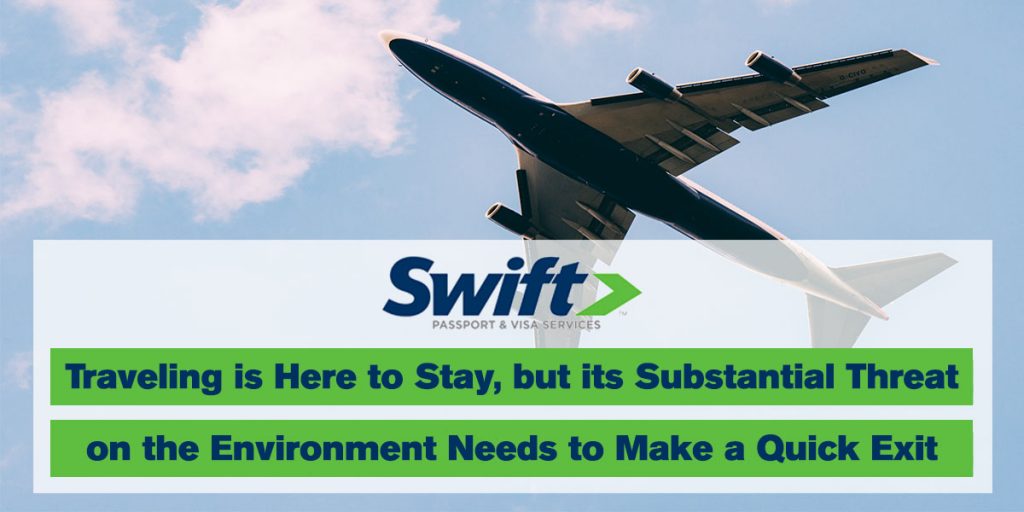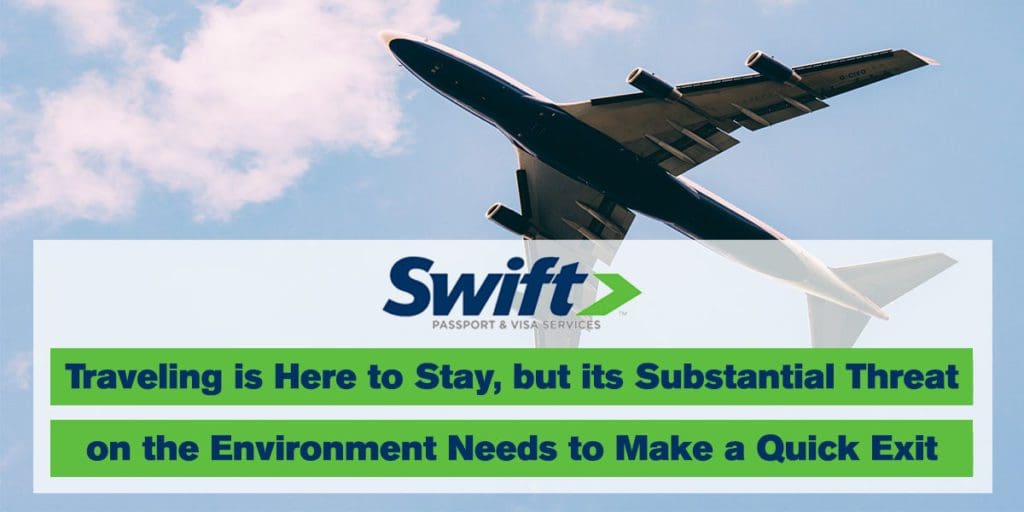
We know that travel isn’t going anywhere anytime soon, but we do need to realize that the travel industry can have a dangerous impact on the environment. Since 1990, carbon dioxide emissions from international flights have increased by a shocking 83 percent. This has added to the cycle of rapidly rising temperatures, melting sea ice, and forests disappearing before our eyes.
While traveling can be great for learning, exploring, and experiencing new cultures, it’s very important that we learn the impact we’re making, and how all of us can be more conscious in the fight against our population’s growing travel footprint.
In the Battle of Carbon Dioxide Versus Earth, Who Will Win?
All forms of transportation that use fossil fuels have an effect on the environment, with planes being the most harmful. When jet fuel is burned, the carbon from the fuel is released and bonds with oxygen to form carbon dioxide. As the amount of CO2 (carbon dioxide) increases, it creates an excess of greenhouse gases that cause heat to be trapped in the atmosphere.
This can add to the cycle of warming, melting ice, rising sea levels, and dying out forests.
Airplanes aren’t the only form of transportation that’s harming the Earth. According to the United States Environmental Protection Agency, transportation in the United States made up 28.9 percent of all 2017 greenhouse gas emissions, primarily from burning fossil fuel for cars, trucks, ships, trains, and planes.
Companies Know There’s an Issue, and Are Working Towards Environmentally Friendly Solutions
Luckily, there are airlines working towards creating a cleaner source of jet fuel. They’re looking to mix biofuels (fuel derived from plant or algae material or animal waste) for fuel instead of continuing to use harmful fossil fuels. A study conducted by NASA proved that using biofuels to power jet engines reduced particle emissions in their exhaust by 50 to 70 percent.
In 2016, Alaska Airlines carried out a successful cross-country flight using biofuel, and more recently Delta Airlines announced it would be investing 2 million dollars to potentially build a biofuel refinery in Washington.

Ways You Can Reduce Your Travel Footprint, While Still Enjoying your next trip:
- Multiple airlines offer carbon offset programs. These programs help fund new projects that reduce greenhouse gas pollution. Delta’s program allows you to give money to The Nature Conservancy’s carbon offsetting projects. These projects protect forest lands that are threatened by conversion to agriculture and help to restore forests around the globe. Meanwhile, JetBlue has partnered with Carbonfund.org which has allowed them to offset more than 2 billion pounds of carbon dioxide. Donations through their program help fund technology and forestry projects.
- Choosing to take a nonstop flight helps considering as much as 50% of carbon emissions come from takeoff and landing.
- Sitting in economy class versus business class can help immensely. According to Conde Nast Traveler, flying from New York to Los Angeles in business class leaves a passenger to emit almost 25,000 pounds of carbon due to less dense seating. But if that person makes the same trip in economy class, they would reduce the amount of carbon dioxide down to 1,247 pounds.
- Knowing your travel footprint can help to decide what you should consider contributing towards a carbon offset program.
Swift Cares About the Environment, and You Should Too
There are so many exciting places to see across the globe that are just waiting to be explored. At Swift, we love to travel, and know that it’s a large part of many people’s lives. That being said, it’s important to understand the impact each individual is making during a trip. Hopefully we have given you the information you’ll need to make more environmentally friendly choices when it comes time to book your next adventure.
No matter where you plan on going next, Swift Passport Services can help you obtain the passport and visa you’ll need. We’ll get you there!

